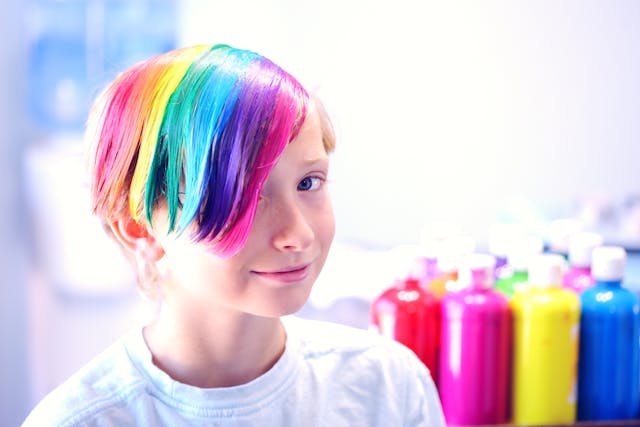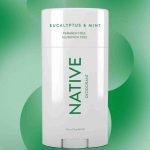Should You Toss That Old Hair Dye? Understanding Expired Hair Dye
Hair dye, a key tool for transforming your look, often lacks a clear expiration date on the packaging. This ambiguity leaves many wondering: does hair dye expire, and is it safe to use past a certain point?
This comprehensive guide dives into the world of hair dye shelf life, exploring the potential consequences of using expired products and offering tips for safe and effective hair coloring.
Unveiling Shelf Life: Expired Hair Dye vs. Spoiled Hair Dye
While unopened hair dye technically doesn’t “expire” in the traditional sense, manufacturers recommend a shelf life of roughly 3 years. After this period, the dye’s effectiveness diminishes.
However, there’s a crucial distinction between expired hair dye and truly spoiled dye. Expired dye might not deliver the desired color vibrancy, but it likely won’t cause harm. Spoiled dye, on the other hand, can be a different story.
Identifying Spoiled Hair Dye: Signs to Watch Out For
Here’s how to recognize spoiled hair dye that should be discarded:
-
Unpleasant Odors: A strong, sour, or unusual smell deviating from the typical ammonia scent signifies potential bacterial or fungal contamination. This is a clear sign to toss the product.
-
Visual Alterations: Keep an eye out for changes in the dye’s appearance. Look for unusual color variations, separation within the liquid, cracks or leaks in the bottle, caked residue around the cap, or damaged packaging.
-
Opened Containers: Once opened, any hair dye becomes susceptible to contamination by air, moisture, and light. This exposure can accelerate oxidation, a chemical reaction that degrades the dye’s performance. Opened, unmixed dyes should ideally be used within 6 weeks. Natural, chemical-free dyes degrade even faster after opening.
Important Note: Mixed hair dye has no shelf life and should never be stored for later use. Always use mixed dye within 1 hour of preparation.
The Risks of Using Expired Hair Dye: Fact vs. Fiction
Let’s explore some common concerns surrounding expired hair dye:
-
Hair Damage: Scientific evidence suggests expired hair dye won’t directly damage hair follicles or shafts, meaning it likely won’t cause breakage or hair loss.
-
Color Mishaps: The most probable consequence is ineffective coloring or a darker shade than anticipated. Uneven color application is also a possibility.
-
Green Hair Myth: While some anecdotal reports claim expired dye turns hair green, there’s no scientific backing for this. However, light blonde, white, or gray hair might develop a greenish tinge due to oxidation of copper in the dye.
-
Allergic Reactions: Permanent hair dye, known for its chemical makeup, carries a higher risk of allergic reactions and scalp irritation. While expiration doesn’t necessarily create new allergens, oxidation might intensify the existing ones.
Remember: If you have a history of sensitivities to hair dyes or allergies to specific ingredients, avoid using any questionable products.
Steering Clear of Trouble: Safe Hair Dye Practices
Here are some key strategies to ensure safe and effective hair coloring:
-
Embrace Freshness: Whenever possible, opt for recently manufactured hair dye for optimal results and reduced risk of complications.
-
Storage Matters: Store unopened hair dye in a cool, dry place away from direct sunlight and heat. This helps to minimize oxidation and maintain the dye’s potency.
-
Patch Test Always: Before applying any hair dye, conduct a patch test on a small area of your skin behind the ear to check for allergic reactions.
-
Follow Instructions: Meticulously follow the manufacturer’s instructions for mixing, application time, and rinsing. Don’t deviate from the recommended process.
-
Seek Professional Help: If you’re unsure about using hair dye at home, particularly with expired products, consider consulting a professional hairstylist.
Natural Hair Dyeing Alternatives
If you prefer a more natural approach or have concerns about chemical-based dyes, here are some options to consider:
-
Henna and Organic Dyes: These alternatives offer a more natural coloring experience, but results may vary and might not be as permanent or predictable as chemical dyes.
-
DIY Kitchen Dyes: While not as long-lasting, certain ingredients like lemon juice, chamomile tea, carrot juice, beet juice, and coffee can subtly enhance hair color, particularly on lighter shades.
Remember: Natural dyes might not deliver dramatic transformations and may require multiple applications to achieve desired results.
Understanding Hair Dye Expiration:
Hair dye products typically do not come with explicit expiration dates printed on their packaging, which can lead to confusion for consumers. Manufacturers generally state that unopened hair dye does not expire, but caution that once opened, hair dye has a shelf life of about 3 years. Beyond this timeframe, the effectiveness of the hair dye may diminish.
The Dangers of Expired Hair Dye:
While there is no concrete evidence to suggest that using expired hair dye is inherently dangerous, there are several risks associated with doing so. Expired hair dye may not work effectively, resulting in uneven coloring or unexpected shades. Additionally, expired hair dye that contains chemicals may cause allergic reactions or other adverse effects on the hair and scalp.
Signs of Expired Hair Dye:
Determining whether hair dye is expired requires careful observation of several key indicators. These signs may include:
- Unusual smell, different from the typical ammonia scent of hair dye.
- Changes in color or consistency, such as streaks, separation, or caking.
- Damaged or deteriorated packaging, including cracks, leaks, or fading.
- Containers that have been open for an extended period, leading to oxidation and degradation of the product.
Why You Shouldn’t Use Expired Hair Dye:
Using expired hair dye carries several potential risks, including:
- Ineffective color results or unexpected shades.
- Greenish discoloration, particularly for individuals with light blonde, white, or gray hair.
- Allergic reactions and burns, especially with permanent hair dye containing chemicals like paraphenylenediamine (PPD) or ammonia.
- Intensified allergic reactions due to the oxidation of chemicals over time.
Home Hair Dyeing Solutions:
For those looking to avoid the risks associated with expired hair dye, there are alternative solutions available for home hair coloring. Organic, henna, or natural hair coloring products offer chemical-free options for achieving desired hair colors. Additionally, common kitchen ingredients like lemon juice, chamomile tea, carrot juice, beet juice, and coffee can be used to create homemade hair dyes, particularly effective for light-colored hair.
Conclusion:
While hair dye may not come with explicit expiration dates, it is essential for consumers to be aware of the potential risks associated with using expired products. Signs of expiration include changes in smell, color, consistency, or packaging damage. Using expired hair dye may result in ineffective color results, greenish discoloration, or allergic reactions. For those concerned about the safety of conventional hair dye, alternative solutions such as organic or homemade hair coloring products offer chemical-free options for achieving desired hair colors. Ultimately, prioritizing safety and understanding the signs of expired hair dye is crucial for maintaining healthy and vibrant hair.




